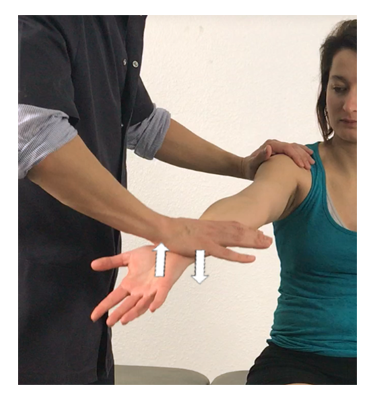Structures / Pathologies ciblées :
- Tendinopathie du long biceps
- Lésion du bourrelet glénoïdien antérieur ("SLAP lesion")
Procédure :
Le patient est assis ou debout. Le thérapeute place l'épaule du patient en flexion antérieure (30 à 90° selon les versions), coude tendu et en supination. Le thérapeute applique sur l'avant-bras une force dirigée vers le sol contre la résistance du patient.
Interprétation :
Le test est considéré comme positif si :
- Le test reproduit la douleur du patient en regard de la gouttière bicipitale.
Validité :
| Auteurs | Sensibilité | Spécificité | RV+ | RV- |
|---|---|---|---|---|
| Chen et al.1 (Long Biceps) |
63% | 60% | 1.58 | 0.62 |
| Hegedus et al.2 (SLAP lesion) |
32% | 61% | 0.82 | 1.11 |
Que signifient ces chiffres ?
Tests associés :
Références:
-
Chen, H. S., Lin, S. H., Hsu, Y. H., Chen, S. C., & Kang, J. H. (2011). A comparison of physical examinations with musculoskeletal ultrasound in the diagnosis of biceps long head tendinitis. Ultrasound in medicine & biology, 37(9), 1392-1398.
-
Hegedus, E. J., Goode, A., Campbell, S., Morin, A., Tamaddoni, M., Moorman, C. T., & Cook, C. (2007). Physical examination tests of the shoulder: a systematic review with meta-analysis of individual tests. British journal of sports medicine.

